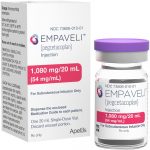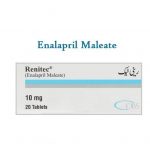
Contents
Lower Blood Pressure in 30 Seconds
Blood pressure is the tension your blood places on arterial walls. Lower it quickly by deep breathing, taking a warm shower, and meditating or reading.
High blood pressure shows no noticeable symptoms until it becomes severe. Short-term fluctuations in blood pressure are normal, such as during moments of stress or anxiety.
This guide explains how to determine if your blood pressure is too high and offers immediate solutions to reduce it.
With each heartbeat, your heart squeezes blood through arteries, creating blood pressure.
Blood pressure fluctuates throughout the day. Stressful moments raise it, while peaceful ones keep it within the normal range of 120/80 mmHg.
Blood pressure is considered high when it’s above 130/80 mmHg. Hypertension occurs when blood pressure remains elevated for months or longer, increasing the risk of health problems like heart attack, stroke, and organ dysfunction.
Causes of high blood pressure
Factors that contribute to high blood pressure include:
- Age and gender: Women may experience hypertension after 65, while men can have it earlier.
- Chronic conditions: Medical conditions like diabetes and kidney disease can increase the risk.
- Diet: An unhealthy diet, with excessive salt or insufficient potassium, can cause sodium build-up and fluid retention, leading to high blood pressure. Dehydration also affects this balance.
- Family history: High blood pressure can be hereditary.
- Physical activity: Lack of exercise weakens the cardiovascular system, leading to faster blood pumping and increased strain on arteries. Obesity contributes to high blood pressure as well.
- Tobacco and alcohol use: Smoking or chewing tobacco causes an immediate spike in blood pressure and long-term damage to arterial walls. Excessive alcohol consumption can also lead to hypertension.
- Stress: Stress is a common cause of high blood pressure.
Recognizing high blood pressure
In most cases, high blood pressure doesn’t cause recognizable symptoms unless severe.
A single blood pressure test is insufficient for diagnosing hypertension due to regular fluctuations. Doctors monitor blood pressure over several months to determine if it consistently exceeds the healthy range. They measure systolic pressure (during heart contraction) and diastolic pressure (during heart relaxation).
Lowering blood pressure in 30 seconds
Reducing blood pressure to healthy levels takes time. Consult your doctor for proper treatment and necessary lifestyle changes.
While high blood pressure rarely shows symptoms, short-term spikes are often a result of stress. Practices that reduce stress have both immediate and long-term health benefits.
If experiencing symptoms of a hypertensive crisis, call 911. Professional medical help is essential. Additionally, try these 30-second techniques:
Practice deep breathing exercises:
Deep breathing slows your heart rate, and just 30 seconds can lower blood pressure.
Lie down comfortably, close your eyes, and focus on your breathing. Inhale through your nose, exhale through your mouth, and expand your diaphragm. You can find guided exercises online for added structure and calming effects.
Take a warm shower:
A long, warm shower or bath relieves muscle tension, reducing external pressure on arterial walls within your skeletal muscles.
Meditate or read:
Clearing your mind can alleviate stress-related symptoms. Try guided meditation or reading a book to divert your focus from stressors.
Naturally maintaining low blood pressure
The aforementioned practices offer immediate relief, but long-term management of high blood pressure requires consistent effort. Consider the following steps:
- Exercise regularly: Physical activity strengthens your cardiovascular system. Aim for 30 minutes of low-impact exercise daily to help manage weight, a contributing factor to high blood pressure.
- Quit smoking: Smoking damages your heart and arteries. Blood pressure decreases significantly within an hour of quitting.
- Moderate alcohol intake: Limit alcohol consumption to one drink per day for women and two drinks per day for men.
- Get enough sleep: Sufficient sleep regulates blood pressure.
- Embrace the DASH Diet: The DASH diet, low in sodium and high in potassium, helps regulate fluid balance and reduce blood pressure.
- Manage stress: Implement stress management techniques and minimize exposure to stressors in daily life.
Take control of your blood pressure
Even hereditary high blood pressure can be controlled through a healthy lifestyle and prescribed medications. Consult your doctor for more information and to understand associated risks.
Sources:
The American Journal of the Medical Sciences: "Racial differences in hypertension: implications for high blood pressure management."
Cleveland Clinic: "DASH Diet: What Is It, Meal Plans and Recipes"
Heart Foundation: "Managing high blood pressure."
Hypertension Research: "How does deep breathing affect office blood pressure and pulse rate?"
Vital Heart & Vein: "Breathing Techniques to Lower Blood Pressure."


